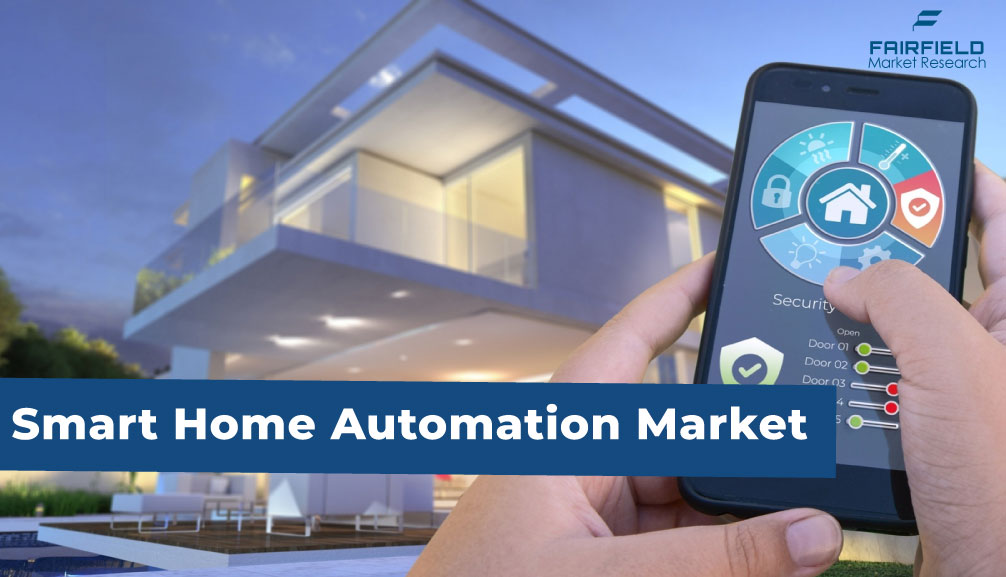Smart Home Automation Market Expansion Across Key Application Areas and Regions

Strong 8k brings an ultra-HD IPTV experience to your living room and your pocket.
The global smart home automation market is undergoing a rapid transformation, driven by technological advancements, rising energy consciousness, and shifting consumer lifestyles. Valued at US$71.8 billion in 2025, the market is expected to grow substantially, reaching US$188.7 billion by 2032 at a CAGR of 14.8%. From smart lighting and climate control to home security and entertainment, smart automation is penetrating a diverse array of applications across all major global regions.
________________________________________
Rising Demand Across Key Application Areas
1. Smart Lighting: Energy Efficiency at the Forefront
The adoption of energy-efficient lighting systems is one of the most prominent growth drivers of the smart home automation market. With LED lighting consuming up to 75% less energy and lasting 25 times longer than traditional incandescent bulbs, homeowners are increasingly switching to LED-based smart lighting systems.
These systems are equipped with dimming features, motion sensors, and daylight harvesting capabilities, providing not just cost savings but also convenience and environmental benefits. Over 60% of smart home users consider energy efficiency the primary motivation for adopting these solutions. Leading companies like Lutron Electronics are further accelerating adoption with voice-activated and app-controlled systems.
2. Smart Security Systems: Wireless, Real-Time, and Scalable
Security is another fast-growing application area. The proliferation of wireless security systems—offering real-time alerts, mobile monitoring, and AI-enabled surveillance—has made smart security a top priority for urban homeowners. These systems are particularly popular in retrofit scenarios, as they do not require structural modifications.
Wireless systems are typically 20–30% less expensive than wired alternatives and are easier to install and maintain. Companies such as Bosch, Cisco, and Schneider Electric are leading providers of these scalable, secure, and intelligent solutions.
3. HVAC Automation: Intelligent Climate Control
With rising energy costs and regulatory mandates, smart HVAC systems are becoming a core component of smart homes. These systems use IoT sensors, predictive analytics, and app-based control to optimize comfort while minimizing energy usage.
In Europe, the Energy Performance of Buildings Directive (EPBD) is mandating the use of smart-ready systems in retrofits and new buildings. Companies like Tado are introducing advanced thermostats that deliver up to 19% energy savings, helping users align with sustainability goals and government standards.
4. Smart Entertainment: Voice-Driven A/V Control
Smart home automation is also redefining entertainment through audio/video (A/V) integration. In North America, the use of voice-command devices and integrated control apps is transforming how households interact with media systems. Devices like Amazon Echo, Google Nest, and Sonos speakers allow users to control music, TV, lighting, and more through simple voice commands—bringing automation into daily routines.
________________________________________
Regional Insights: A Global Surge in Adoption
North America leads in smart home tech, with over 60 million homes using voice assistants like Alexa and Google Assistant—particularly for A/V automation and home entertainment.
Europe sees strong growth in smart HVAC adoption, driven by strict energy regulations and the need to retrofit older, inefficient buildings.
Asia Pacific is expanding rapidly, with rising smartphone use fueling demand for affordable, wireless smart devices from brands like Xiaomi and Samsung.
Middle East is leveraging smart city projects in the UAE and Saudi Arabia to drive smart home adoption, with major firms integrating security and energy solutions into urban infrastructure.
________________________________________
Growth Restraints: Cost Challenges in Retrofit Installations
Despite rising adoption, one of the biggest barriers remains the high cost of wired systems, especially in retrofit markets. Installation can cost between US$6–12 per foot for commercial setups and as much as US$20 per foot in complex residential projects. Additional labor costs (up to US$100/hour) make such setups less attractive in price-sensitive markets.
Consequently, wireless systems are gaining favor, offering similar functionality with reduced disruption and lower costs, making them ideal for both developed and developing markets.
________________________________________
Competitive Landscape: Industry Leaders Shaping the Future
Top companies driving innovation in smart home automation include:
• Amazon
• Samsung Electronics
• Apple Inc.
• Siemens AG
• Schneider Electric
• Bosch
• ABB Ltd.
• Honeywell International Inc.
• Lutron Electronics
• Xiaomi
• Control4 Corporation
• Philips Hue
Get Sample Copy of Report at: https://www.fairfieldmarketresearch.com/report/smart-home-automation-market/request-sample
Note: IndiBlogHub features both user-submitted and editorial content. We do not verify third-party contributions. Read our Disclaimer and Privacy Policyfor details.







